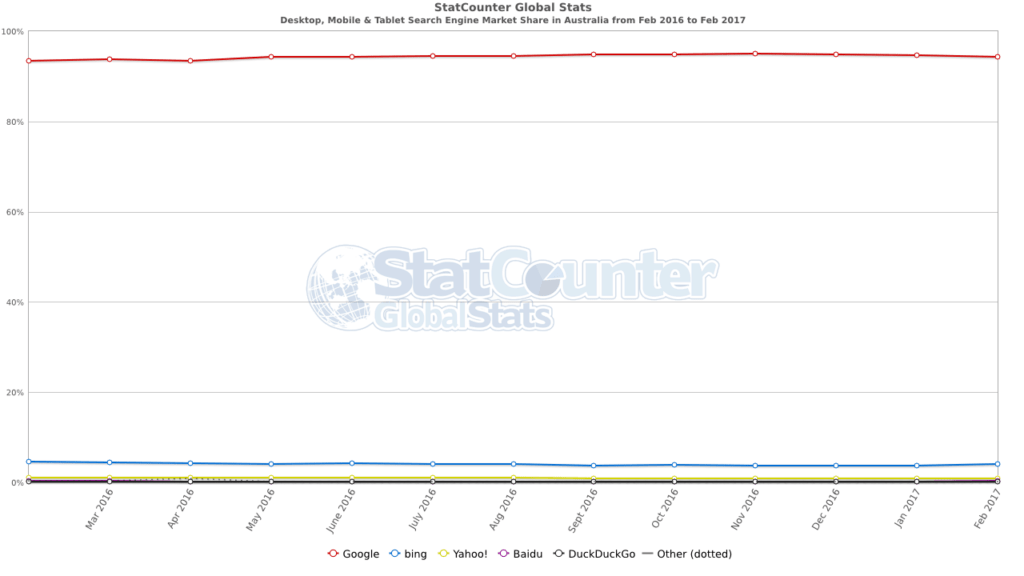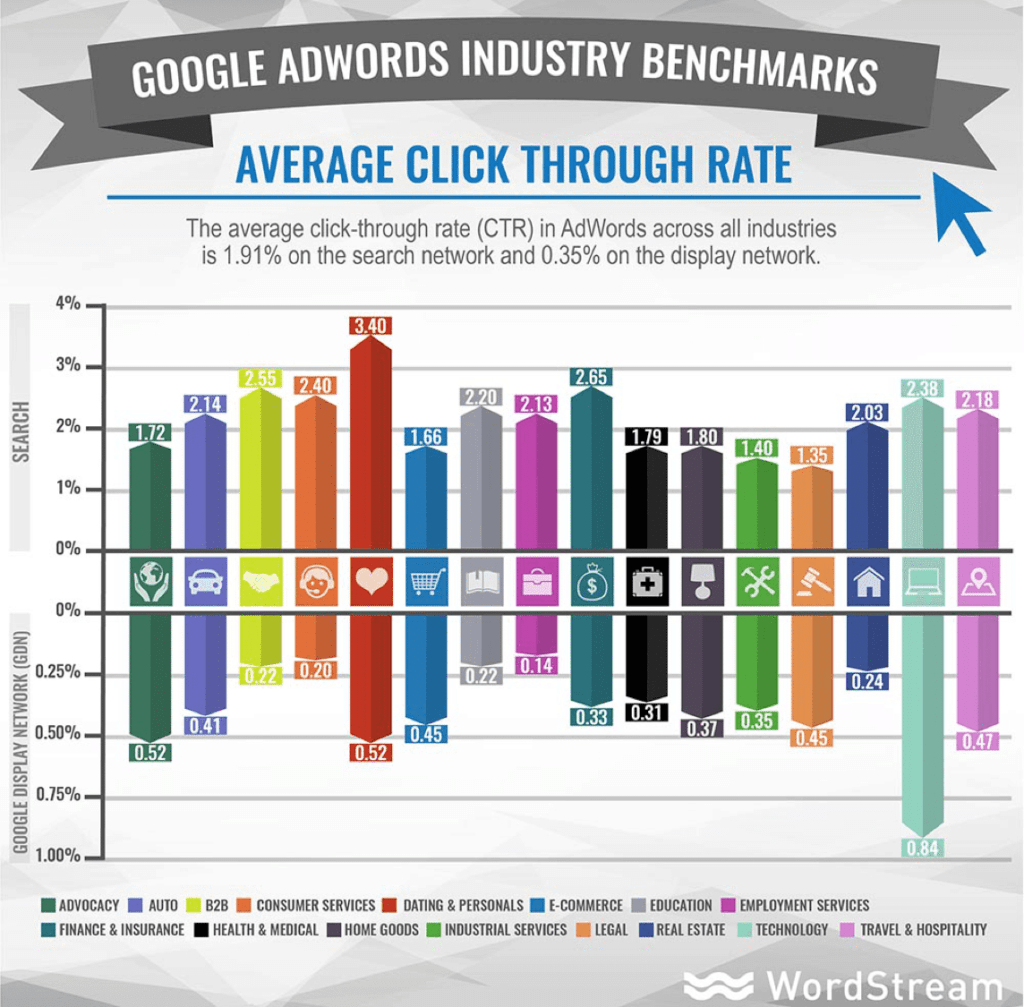What is Search Engine Optimisation + Why it’s important for Tourism Brands
Published on March 9, 2017
For the past 7 years, I've been educating tourism operators and destinations about the importance of Search Engine Optimisation and it's impact on online brand success. And whilst initially people are relatively confused about the tactic, I often get such great reactions when the lightbulb goes off for individuals as they fully understand the outcomes of a well planned and implemented SEO strategy - which is really exciting!
So, whilst SEO has such a dry and boring reputation (because, it's not as fun and exciting as Social Media), I hope to help simplify your understanding of the tactic, by showing you that:
- SEO is really just a mindset when creating and sharing webpages
- SEO is a really simple process, that most people are already doing it without knowing
- SEO is one of the most effective and efficient marketing tactics a tourism brand can deploy to get their business/brand in front of the right people!
So, the aim of this post is to literally get your 'buy in' on Search Engine Optimisation, and to hopefully have you taking small steps to improving your brand's visibility in Google Search Engine, so that you can drive more qualified traffic (people who are genuinely interested in buying your product) to your website!
What is Search Engine Optimisation?
Search Engine Optimisation is a term used to describe a range of marketing tactics humans implement to try and influence the visibility of webpages in the 'organic listings' of a search engine's results page.
By undertaking SEO tactics, your webpages have the best opportunity to rank highly in search engine results, and therefore give you a higher percentage of qualified click throughs or leads to your website, and (if you have a conversion optimised website) you will hopefully get a higher percentage of sales conversions for your business.
I often liken SEO to real estate (run with me here...!)
If you don't optimise your webpages for search engines, you are literally building a house in the middle of nowhere (say Finke in Western Australia!), and expecting people to find you without a map.
So, there is little point investing in a website unless you are committed to drawing a map so your ideal customers can find you when they are looking for travel inspiration or undertaking research online.
Why you need to optimise your site for Search Engines...
The below stats from Google's 2014 Traveller's Road to Decision speak for themselves.
- Search engines are the most popular online planning source for leisure travellers (60%), and second most popular for business travellers (55%).
- Additionally, 57% of leisure travellers ALWAYS turn to search first as a starting point for their travel shopping and booking process.
- And finally, leisure travellers are year on year, are increasingly turning to search engines for online trip planning.
So it is with authority that we recommend all tourism brands (large and small) invest in search engine optimisation, to leverage these opportunities!
Who's the Fairest of Them All?
According to Stat Counter Global Statistics, from Feb 2016 - Feb 2017 Google was the most widely used search engine in Australia and the world, with over 90% market share.
So basically, when we talk about search engines, we are mostly talking about Google, given it's dominance in the market.
The importance of Ranking on Page 1 in Search Engine Results
Page 1 rankings are critical for those businesses who want to drive traffic to their website, but before I go into some stats, to understand the importance of a page 1 ranking, you first need to understand how Google lays out their search engine result pages.
Search Engine Results Page Layout
The layout of Google’s search engine results pages change fairly often, as they are always trying to improve their product for their user.
At this very moment in time, when someone types in a search query into Google, their Search Engine Results Page looks like this…

The first 4 listings are paid adverts (only for 23% of searches, otherwise this ad block doesn't exist), followed by 10 organic listings – which are webpages that rank without being paid for, then followed by another 3 paid advert listings.
So, as I said earlier in the post, when we invest in search engine optimisation tactics, we are essentially improving our webpage’s ability to rank as high as possible in the organic listings.
When a Google search engine user searches for product specific or local search queries, then this Google+ Local ‘3 pack’ appears just below the paid advertisements, before the start of the organic rankings.

The content for this 3 pack is generated from the Google+ Local listings that are are most trusted by Google.
We've written a detailed post on how to claim and optimise your Google+ Local page for your tourism brand if you're wanting to learn more.
Click-Through Rates
The reason why having a page 1 ranking in Google search results is so important is because those organic listings on page 1 get the most click-throughs.
Click through rates are always changing, however Data from Advanced Web Ranking, which is a website which has a dynamic click-through rate calculation tool for Google, shows….
Approximately 70 percent of all page one click-throughs for both mobile and desktop go to the first 4 listings.
Click Through Rates in Comparison to Search Advertising (Google Adwords Pay Per Click)
The organic listings in Search Engine Result Pages garner more click throughs as a whole than those of paid advertisements. The infographic below (courtesy of WordStream) suggests that for the Travel industry, the clickthrough rate for paid listings is 2.18%.
So, in comparison to the click through rates for organic listings (above), you can understand why we recommend investing in search engine optimisation techniques as a priority over paid advertising.
In saying this, for some tourism brands there is a time and place for paid advertising, but certainly not at the expense of your search engine optimisation investment.
Ranking Position Is Not Consistent with All Users
Now that I’ve told you all about page rankings and click-through rates, it’s important to note that the position of webpages in any given search engine result will differ for every individual user.
The reason for this is that Google and other search engines take into account a myriad of considerations when delivering search results, including location, past searches, interests, and demographics, all of this data is being supplied to Google by users as they use their platform.
So when it comes to measuring the success of your SEO tactics, we can't focus on the tangible page rankings that we can see when we undertake a search, rather, focus on the quantity of leads (and sales) you get from people visiting your website from Google and other search engines.
How Search Engines Work
Search engines have three major functions:
- Crawling web pages
- Building an index
- Providing answers to search queries by calculating relevancy
Search engines are human-like programs that are concerned with the content ‘within’ your webpages and the overall ‘popularity’ of your website to decide whether it will rank it for certain search queries.
Search Engine ‘Spiders’ use the links throughout your website, and those that are directed to your site from external websites to successfully find and navigate each and every page in your website.
Once the search engine spiders have found and crawled your webpages, those pages are then indexed in data centres across the world. Indexing basically is used to determine what resources to suggest as an answer to a query and the words/phrases composing it, not in what order to suggest them – that is the job of the ‘Ranking’ process.
Major Ranking Factors
With an enormous amount of competition online for brand visibility, the reality is that Google has to prioritise webpages. So if you want Google to rank your webpages well, you have to play by it's rules.
But as you can imagine, it is far to complex to stay abreast of all of the intricacies of Google’s Algorithm updates (check out Moz.com's Google Algorithm Change History), which means that understanding all of the factors have the most influence over a page’s ranking isn’t achievable.
However, over the past 4 years, experts in the field of SEO (including Search Engine Land, Moz.com, and many more) have consistently been communicating a number of factors that Google considers as a priority when ranking pages, including:
Create Epic Content
As you well know, content is King, Queen and the Jester when it comes to tourism marketing, and it is no different when it comes to SEO. Tourism brands need to simply focus on creating epic content that answers specific end user questions, solve problems and provide useful, relevant, inspiring information (such as your Ideal Customer's Micro-Moments) as this will engage more of the right people, but will also demonstrate to Google that you are providing relevant content.
Website Architecture
Search Engines can only deliver webpages they can crawl and index your webpages accordingly. This means ensuring your webpages have a fast load time, have no broken links, or error pages, and have ‘search friendly’ URLS, which contain your chosen search query for the page.
Search Query Optimisation
Although search queries don’t have a dominant role in Google’s ranking algorithm as they used to, they still play a really important role in identifying relevant content – so it’s still a very important process.
Take a read of my practical post on how to optimise webpages and content to get your head around this tactic.
Social Authority & Referrals
According to Smart Insights (www.smartinsights.com), some of the newer search signals which Search Engines are currently placing emphasis on when ranking pages include:
- Content Recency - When people recently interacted with your content e.g. social bookmarking a web page, visiting a webpage from social media, commenting on a blog, reviewing a product/service.
- Social Voting – When people use social buttons on web pages to rate content, for example, a Like on Facebook or +1 on Google+
- Social Sharing – When people post a URL from your website on their social networks like Facebook, Twitter & Pinterest
The take-away message here is that the more active you are on social media, and the more engaged your followers are with your website content, the more Google will reward your webpages in search engine results.
Take a look at our blog post on how your social media activity impacts your search engine rankings to learn more about the relationship between Social and SEO >
Link Building
This includes establishing relevant inbound links to your webpages, such as free & paid directory listings, rate & review websites, and links from other authoritative, relevant sources with match your organisation’s purpose.
I've written a whole blog article on how to get started with your link building strategy, so you can pop on over there to get our practical tips.
Mobile Optimisation Matters
In late 2016, Google announced a major revision in the way it was going to rank pages in its search results. Google decided in April 2015, that it was time to begin rolling out a mobile-first strategy, since the majority of searches were being made from mobile devices.
What that meant for internet users was that mobile-friendly websites would get what Google called a rankings boost, which means that would rank higher than desktop-only sites in search results.
Mobile First Strategy
More recently, they’ve just announced that the move towards a single indexing system based on mobile-friendliness. What this means is that Google will be using the mobile version of a website to assess the relevance of your content and determine your search engine rankings for your webpages.
This means that mobile-friendliness is no longer just a consideration that Google takes into account when making its rankings, but rather the basis of the entire indexing system.
The biggest problem for some destinations is that their ’mobile site’ is not a mobile responsive version of their desktop site, and therefore doesn’t contain all of the content of the desktop version – in which case, may impact on that brand’s visibility in search engine results (check out Google's Blog Post on this for the tech details)
So, to counteract this, tourism brands need to ensure their website is mobile responsive, and not a mobile site.
Google is Penalising Sites with (some) Pop-Ups
Continuing on their journey to creating the perfect mobile experience, Google has begun penalising the rankings of mobile responsive sites with 'Intrusive Interstitials' (or pop-up adverts or email capture light boxes).
Take a read of Smart Insight's article which details what type of pop-ups will be penalised >
Local SEO
With approximately 46% of desktop and mobile search having local intent, and 78% of mobile searches lead to an offline purchase, it is important that the search queries you choose for each of your pages have some relevance to your physical location.
And data from the Consumer Barometer shows that consumers in Australia turn to search engines (93%), when looking for local businesses.
So from a tourism marketing perspective, it’s really important that your web content has clear references to your geographic location, so that your webpages have the best chance of being visible when people are looking for localised services and products.
Having an optimised and active Google+ Local page and GoogleMyBusiness listing (both connected via the Google+ platform) will enhance your visibility in the 3-pack listings in Google Search Results Pages (as I noted above). You can learn more about how to claim and optimise your Google+ Local page for your tourism brand by reading our blog post >
SEO is just a mind-set
After reading this post, I hope you have a greater understanding of what Search Engine Optimisation is, and how important it is for your tourism brand, and your fears are somewhat relieved.
Don't get me wrong, SEO takes time, patience and a bit of grunt work, and results take a while to materialise.
Just remember that SEO really is just a mindset, something that you need to be thinking about every time you are creating content for your website - don't let it be an afterthought. And content optimisation is literally a process, that after a few applications, you will absolutely get the hang of.
If you have had success with optimising your webpages, then I'd love you to share your case study with me in the comments below!





